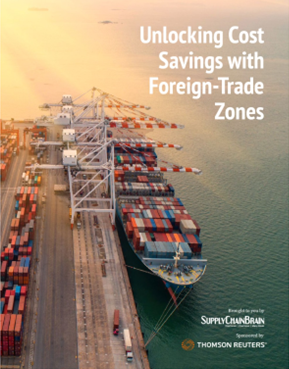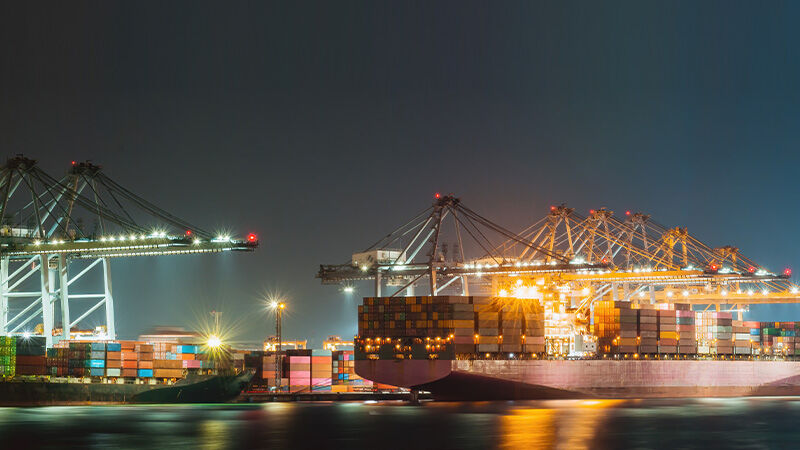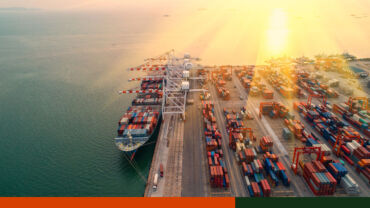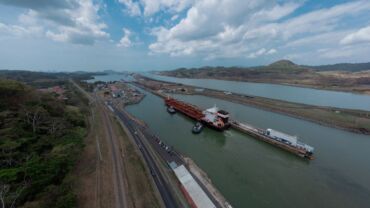Global supply chains are getting more difficult to manage by the day, making it all the more important for businesses to use every advantage they can get. That’s why businesses would be wise to explore strategies that help them defer costs incurred from customs duties, taxes, and other expenses, and minimize encounters with bureaucratic regulations.
“As global supply chains become increasingly more complex, companies must find ways to optimize costs while still maintaining efficiency,” said Liz Connell, Senior Director of Product Management, at ONESOURCE Global Trade.
Connell’s comments came during a webinar hosted by Thomson Reuters on Reducing Supply Chain Costs Through Zone-to-Zone Rules. During the webinar, panelists shared strategies for leveraging zone-to-zone rules to help businesses reduce costs in their supply chains. Specifically, they offered insights into the benefits of shipping between multiple foreign trade zone locations and discussed how to identify opportunities for savings.
Using Foreign-Trade zones strategically is a key component of helping companies optimize their supply chains, streamline logistics, gain access to greater flexibility in their operations, and take advantage of tax breaks unavailable to companies operating outside FTZs.
Supply chain cost optimization with FTZs
How can businesses optimize costs and savings by leveraging ‘zone to zone’ shipping between multiple foreign trade zone locations? Understanding the rules and regulations governing foreign trade zones is paramount. Knowing how to identify opportunities for savings is also very important.
Cody Davis, Senior Manager, EY Global Trade and a webinar panelist, noted that understanding and complying with the rules and regulations governing foreign trade zones is crucial for companies wanting to leverage zone-to-zone shipping. At the same time, Davis said that while trade compliance is typically considered a cost center and not viewed as value generation, it can offer strategic benefits as well.
Almost any business, except retail, can gain access to greater flexibility in its operations by utilizing an FTZ. However, the savings on duty deferrals and merchandise processing fees (MPFs) are some of the biggest benefits for many. They’re often enough to justify investing in an FTZ program.
Kimberly Coyne, FTZ Product Manager, Thomson Reuters, and also a webinar panelist, said that leveraging a network of FTZs can reduce or eliminate Duty, which can be meaningful to both suppliers and customers.
“Finding ways to reduce keying by also transferring this data along your supply chain is becoming more and more the trend” Coyne said. “This is saving lots of time by discontinuing the practice of multiple parties keying the same data over and over as well as reduces the potential of those keying errors, and reconciling data becomes so much faster and auditing is a less time-consuming practice.”
Zone-to-zone transfers can help reduce costs
Using zone-to-zone transfers can help businesses defer Duty payments until the last possible minute to capitalize on savings potential, according to the panelists.
Coyne notes that the Duty would not be paid unless the goods leave FTZ and enter into U.S. commerce. “If that happens, entry is made and the Duty, along with the consolidated merchandise processing fee—that one time a week fee—will be paid at the time the goods leave that zone.”
Davis added that the larger a business’ bonded footprint within the U.S. (including its network and suppliers), the more flexibility and opportunities it’ll have to maximize potential duty savings. The areas of possible savings include the merchandise processing fee, column one or column two tariffs, and the customer’s inverted tariff potential.
Solid operational procedures and system integration
Strong operational procedures and system integration are extremely important when implementing a zone-to-zone strategy for supply chain optimization. It’s essential to have a good way to reconcile what was shipped from one zone and received in another for inventory and tracking purposes.
Davis said firms will want to make sure they’ve developed “good operational procedures that can identify exports” and that are “communicated well.” David also said it was crucial that staff were trained properly on the procedures and that businesses do “thorough testing of the transactional mapping to the FTZ system” to help mitigate risk.
Coyne underscored the importance of system integration and establishing good relationships with supply chain partners to ensure the success of a zone-to-zone strategy. “If you have a sophisticated FTZ management system that is integrated with your ERP system as well as integrated with your zone-to-zone partners, that’s going to greatly reduce your costs and maximize your supply chain efficiency,” Coyne says. “So, finding single points of data entry and then transferring that data along your supply chain is becoming more and more the trend.”
For businesses of all sizes
It is a misconception that FTZs are only cost-effective for large companies. In fact, almost any company involved in import/export activities can employ an FTZ strategy that can lead to cost savings.
Setting up an FTZ program is a lengthy, multi-step process that requires attention to detail and patience. The application process can take from six to nine months to complete.
Despite that, it is not as daunting or as complicated as it may seem. Firms will need to make sure they know exactly what they’re going to do in their FTZ and how they plan to manage it. They’ll likely need to address several managerial and technical issues before successfully operating an FTZ.
 |
|








